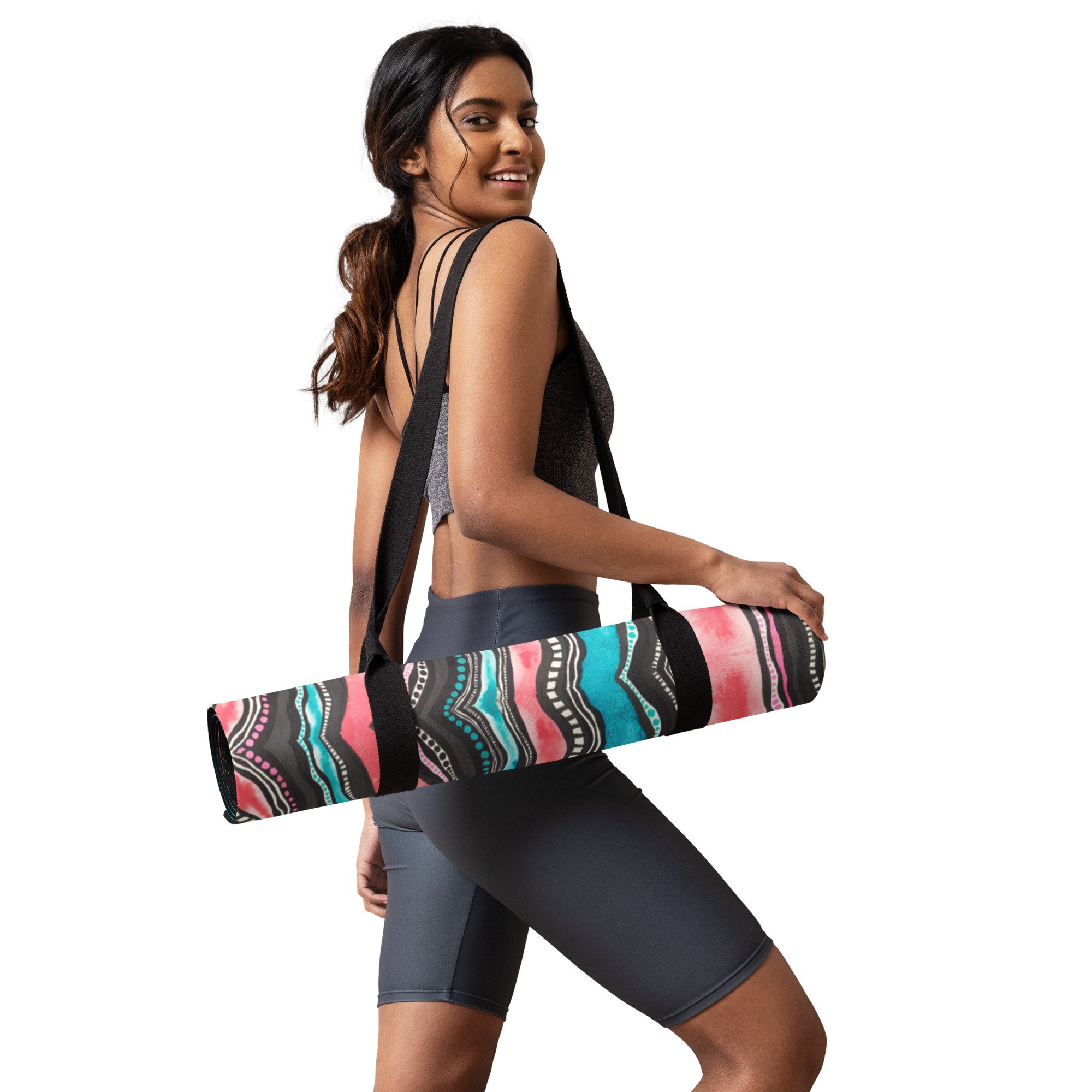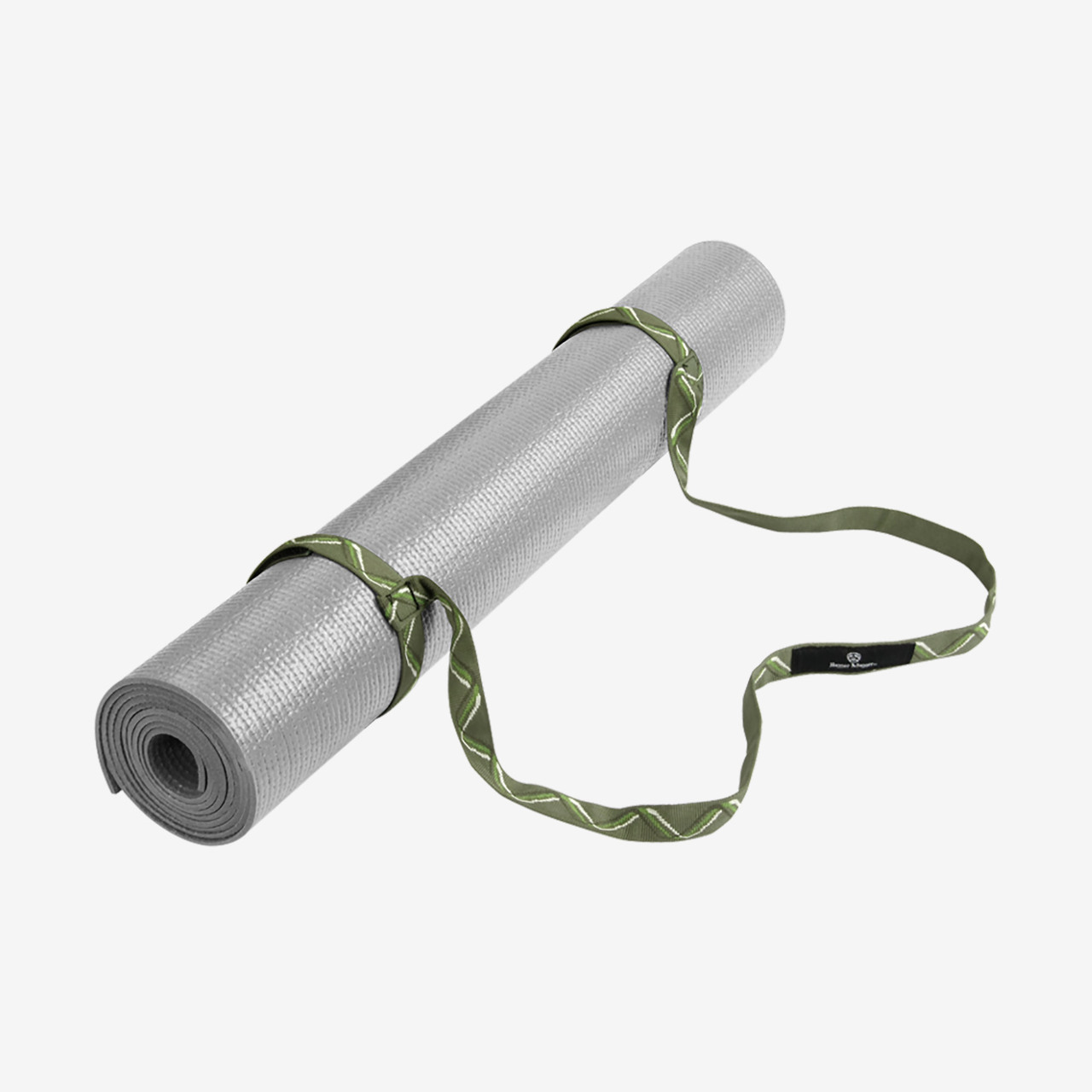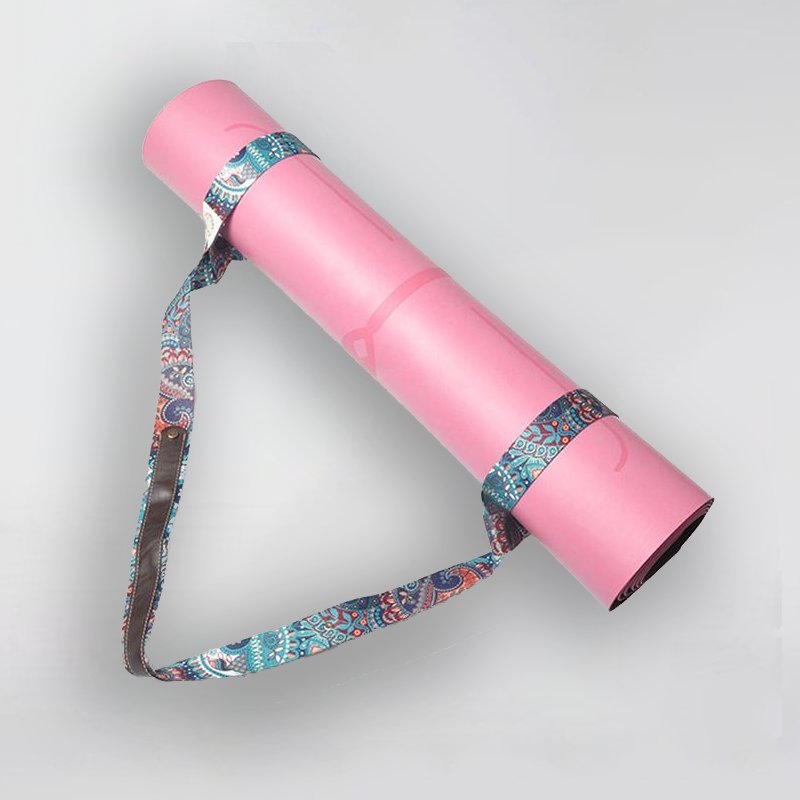How to carry a yoga mat? Yoga is a practice that involves physical postures, breathing exercises, and meditation. It is important to have the right equipment for yoga, with the most crucial piece being the yoga mat. Yoga mats provide a comfortable and supportive surface for practicing yoga, but carrying them around can be a bit of a hassle. In this article, we will explore different ways to carry a yoga mat, from simple straps to specialized yoga mat bags.

The Importance of Carrying a Yoga Mat
Carrying a yoga mat is an essential part of practicing yoga, as it allows you to easily transport your mat to and from the yoga studio, gym, or any other location where you may practice. With the right carrying method, you can make sure your yoga mat stays clean, protected, and easy to carry, enabling you to focus on your practice rather than worrying about how to transport your mat.
Carrying Straps
One of the simplest ways to carry a yoga mat is to use carrying straps. These are typically made of elastic or cotton and are designed to wrap around the mat and hold it securely in place. Carrying straps are lightweight and easy to use, making them a convenient option for those who want a simple, no-fuss way to carry their mat.
To use a carrying strap, simply lay your yoga mat flat on the ground, roll it up from one end to the other, and then wrap the carrying strap around the rolled-up mat. Once the strap is secure, you can sling it over your shoulder or carry it by hand. Carrying straps are a great option for those who want a minimalist carrying solution that doesn’t add any bulk or extra weight.
Yoga Mat Bags
Another popular option for carrying a yoga mat is to use a yoga mat bag. These bags are specifically designed to hold yoga mats and often come with extra compartments for storing additional yoga accessories, such as water bottles, towels, or yoga blocks. Yoga mat bags are available in a wide range of styles, colors, and materials, making it easy to find one that suits your personal style and needs.
To use a yoga mat bag, simply insert your rolled-up mat into the bag, zip it up, and either carry it by the handles or sling it over your shoulder. Yoga mat bags provide more protection and organization than carrying straps, and they often include additional features such as adjustable straps, pockets, and ventilation to keep your mat dry and fresh.

Backpacks
For those who prefer a hands-free carrying option, backpacks can be a convenient way to transport a yoga mat. Many backpacks are designed with a specific slot or straps for holding a yoga mat, making it easy to carry your mat while keeping your hands free. Backpacks are a versatile option that can also be used for carrying other items, making them a great choice for those who need to bring additional gear to their yoga practice.
To use a backpack for carrying a yoga mat, simply insert the rolled-up mat into the designated slot or use the straps to secure it to the outside of the backpack. Once the mat is secured, you can wear the backpack as you normally would, with the added benefit of having your yoga mat conveniently attached.
Carrying a yoga mat is an important part of practicing yoga
And it’s essential to find a carrying method that suits your needs and preferences. Whether you prefer a simple carrying strap, a specialized yoga mat bag, or a versatile backpack, there are plenty of options available to make transporting your yoga mat easy and convenient. With the right carrying method, you can ensure that your yoga mat stays clean, protected, and ready for your next practice session.
How to choose a yoga mat
Yoga has become a popular form of exercise and relaxation, with millions of people across the world practicing it on a regular basis. One essential piece of equipment for any yogi or yogini is a high-quality yoga mat. The right yoga mat can enhance your practice, providing stability, support, and comfort, while the wrong one can be a distraction and hinder your progress.
Considerations for Choosing a Yoga Mat
Thickness
One of the most important factors to consider when choosing a yoga mat is its thickness. The thickness of a yoga mat can greatly impact your practice, with thicker mats providing more cushioning and support for your joints, while thinner mats offer a firmer and more stable surface for balance poses and standing postures.
If you have sensitive knees or joints, a thicker mat, typically around 6mm, may be more suitable for you. On the other hand, if you prioritize stability and balance in your practice, a thinner mat, around 3mm, may be a better choice. Ultimately, the right thickness for you will depend on your personal preferences and the type of yoga you practice.

Material
Another important consideration when choosing a yoga mat is the material. Yoga mats are typically made from PVC, rubber, TPE, or natural materials such as cork or jute. Each material has its own unique properties and benefits.
PVC mats are durable, affordable, and provide excellent grip, making them a popular choice for many yogis. However, PVC is not a biodegradable material and may not be suitable for those with allergies or sensitivities.
Rubber mats are eco-friendly, non-toxic, and offer excellent grip and cushioning. They are a great choice for hot yoga or any practice that involves a lot of sweat, as they provide good traction even when wet. However, rubber mats can have a strong rubber smell when new, which may be off-putting to some users.
TPE mats are made from a thermoplastic elastomer and are known for being lightweight, durable, and recyclable. They are a good choice for those looking for an eco-friendly option that still offers good grip and cushioning.
Texture
The texture of a yoga mat can greatly impact its grip and comfort. Some mats have a smooth surface, while others have a textured or sticky surface to provide better traction. If you tend to perspire a lot during your practice, a mat with a textured or sticky surface may be more suitable for you, as it will help prevent slips and provide better grip.
However, if you prefer a smooth surface or practice a style of yoga that involves a lot of flowing movements, a smooth mat may be a better choice. Ultimately, the right texture for you will depend on your personal preferences and the type of yoga you practice.
Size
Yoga mats come in a variety of sizes, so it’s important to choose one that suits your body and practice. Standard yoga mats are typically around 68 inches long and 24 inches wide, which is suitable for most people. However, if you are taller or prefer more space to move around, you may want to consider a longer mat, typically around 72 inches, or a wider mat, typically around 26 inches.
Aside from the length and width, you should also consider the thickness of the mat. A thicker mat may provide more cushioning and support, but it will also be heavier and bulkier to carry around. If you plan to take your mat to yoga classes or travel with it, a thinner and lighter mat may be more convenient for you.

In conclusion
Understanding how to carry a yoga mat is essential for anyone who practices yoga regularly. By exploring different carrying options and finding the method that works best for you. You can make sure that your yoga mat is always ready to go wherever your practice may take you. So, whether you prefer a hands-free backpack, a convenient yoga mat bag. Or a simple carrying strap, there is a carrying solution that will make transporting your yoga mat a breeze.
